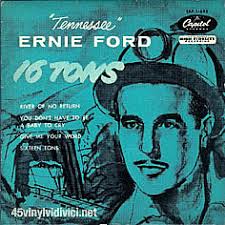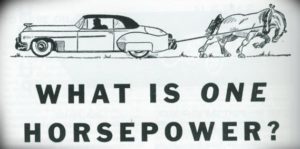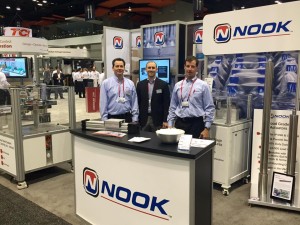A guest blog post from Erin Lease Hall, CTSM at Nook Industries.
According to a CEIR (Center for Exhibition Industry Research) study, 39% of attendees spend less than eight hours visiting a trade show. As the Nook Industries Trade Show Manager, planning and preparation are my essential keys to a successful exhibition, but it is also the main ingredient to maximizing time on the trade show floor as an attendee. Whether you are a first time attendee or an old pro, here are some tips and tricks to get the most out of walking a show.
Game Plan
Plan ahead and set objectives. The more time and effort you put into it, the more you will get out of it! Go over the show guide online and mark your must-see’s and want-to-see’s. Prioritize your route on the online map, with must-see’s first and decide how much time you want to spend at the show and then at each booth. Allow extra time for browsing, distractions and waiting in lines. There are lots of cool things at shows and they are great for sparking ideas. One of the great assets of attending a trade show is that we come face to face with concepts and ideas which we have may never have considered as options or have dismissed.
Divide and conquer! If you are attending with co-workers compare and share your game plans so you aren’t doing double-duty.
Pre-Show Prep
Register for the show with complete information, which will allow vendors to quickly scan your badge and have the information on hand to follow up with you. Register for seminars or workshops you want to attend. These are great networking events!
Book a hotel room using the show rate online and have a transportation plan, whether it be taxi, Uber, show shuttle bus (a perk to booking through the show site – but if you are booked nearby, you can always get the shuttle by waiting in the lobby of a hotel on the shuttle line), or the nearest parking lot to the convention center.
Set appointments with vendors if possible. Pack a small snack, bottle of water, a mobile phone portable charger, a pen and notebook, and lots of business cards. Plan to wear comfortable shoes! Bring a bag or a back pack if you plan to collect materials. Take the alternative to have literature mailed or emailed to you so you don’t end up carrying around a lot of materials.
Game Time!
It is easy to be overwhelmed once you get to the show venue. Take advantage of coat/bag check. Take a minute to check over the printed directory and make sure your game plan is still on track.
Have specific questions ready during your booth visits and don’t be afraid to push for an answer! Don’t be shy about telling a vendor you are on a tight schedule. Avoid casual conversation if you don’t have time for it and focus on the task at hand. Pass by booths that do not interest you, the exhibitors won’t mind. They want to devote their time to potential customers.
Quickly summarize your visit in booths that interest you in your notebook or make a note on your phone about your experience if it is something you want to follow up on. It’s a long day and the appointments might start to run together.
Follow Up
Don’t waste the information gathered at the show – file the information you have gathered or share with your colleagues if you don’t need it, as you probably know someone within your organization who does.
Long hours on the trade show floor are enough to wipe anybody out. But before you hit the bar for happy hour or crash for the night, take some time to organize the information you’ve gathered. If it’s for co-workers back at the home office, sort it into envelopes and address them to the relevant person. If the information is for you, sort it by priority, affixing sticky notes to jog your memory after you’ve returned from the show.
Come check out Nook Industries in booth S-7890 at PackExpo 2105 in Las Vegas, and at the Automation Fair in Chicago this November and see how we Make Motion Work.





